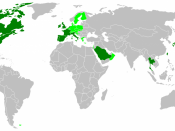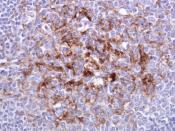In order to see where viruses, viroids and prions fit into the scheme of life, we need to know what life is and what the properties of life are. The capabilities of viruses, viroids and prions and the diseases they cause. Should they be considered 'alive' if they only contain a few of life's properties because their survival depends on other living cells.
Life consists of living things and these living things have cells that have the capacity for "order, reproduction, growth and development, energy utilization, evolutionary adaptation, response to the environment and homeostasis" (Campbell and Reece, 2002). These capabilities represent life in animals, plants and humans.All livings things are susceptible to illness and disease, with viruses being a major cause; they also alter the behaviour of the host of whom they occupy (Villarreal, 2004).
The structure of viruses is of "free particles that have a protein coat and a nucleic acid core" (Keeton and Gould, 1967).
Viruses have similarities to 'prokaryotic cells' (cells that lack organelles), they share similar "genetic materials and constantly intertwine" (Keeton and Gould, 1967) with each other. The particles 'float' outside the cell, then 'enter' a healthy cell within the host. Once inside, the healthy cell "manufactures new virus particles when the old virus provides the instruction" (Keeton and Gould, 1967). The new particles leave the host cell, move into another cell and repeat the process. Viruses are also capable of entering the cell and remaining 'vegetative' (waiting for the right environmental conditions to emerge), combining their viral DNA with the hosts DNA for replication or as a permanent cell fixture (Keeton and Gould, 1967), it doesn't necessarily kill the cell it enters (Norrby, 1981).
There are two kinds of virus, which are based upon the "kind of nucleic acid that makes up its...


